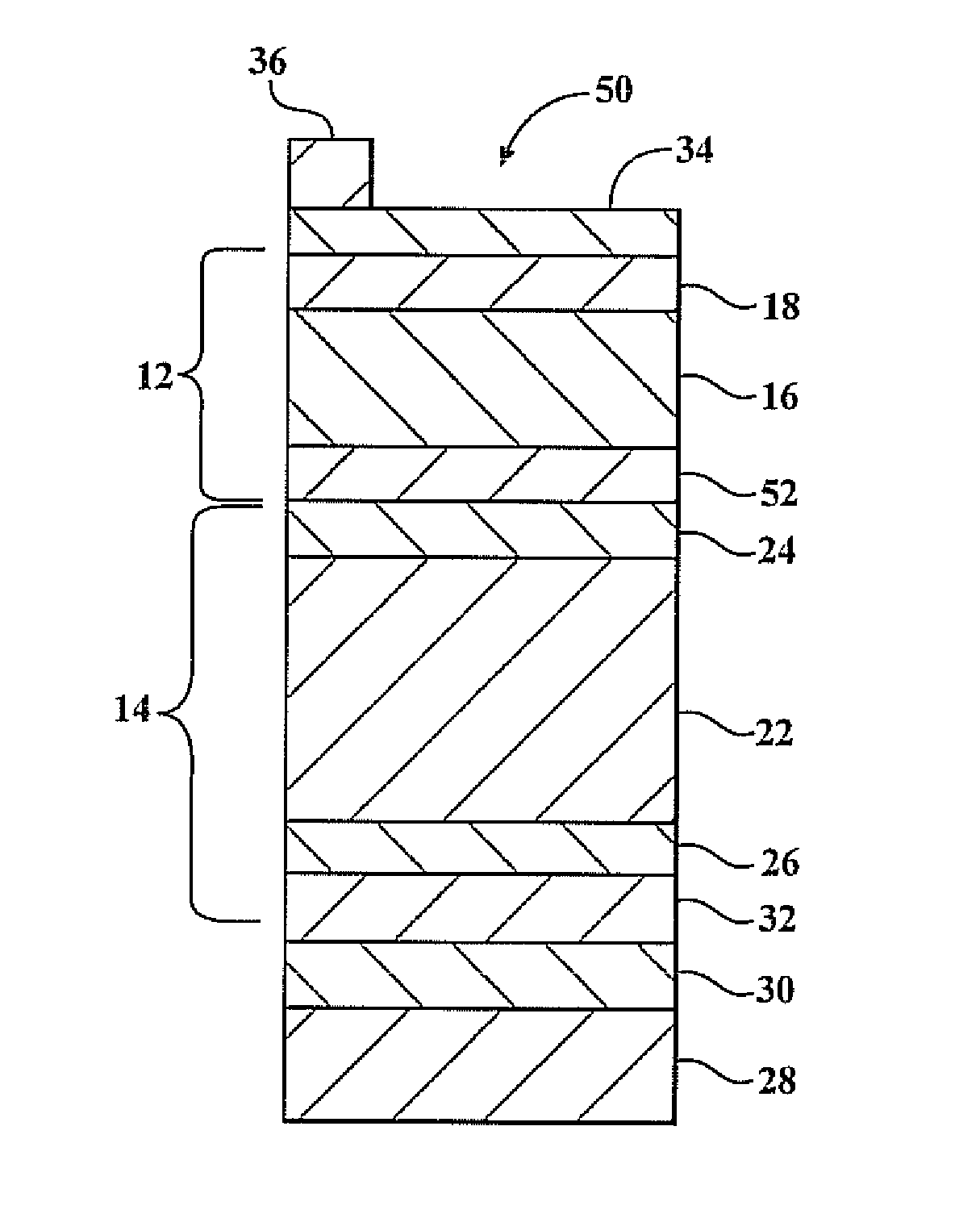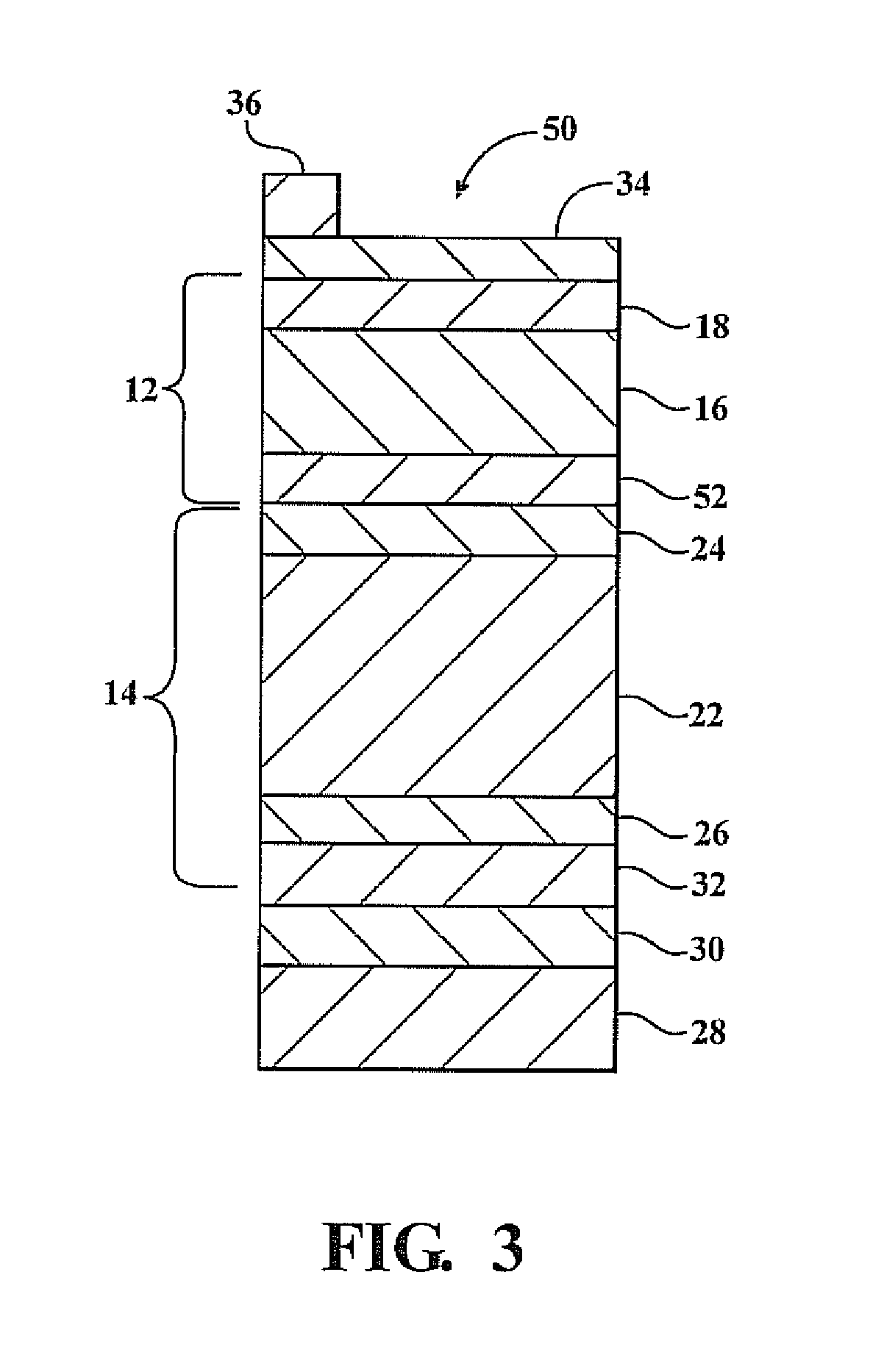Tandem photovoltaic device with dual function semiconductor layer
a photovoltaic device and semiconductor layer technology, applied in the direction of pv power plants, non-metal conductors, conductors, etc., can solve the problems of increasing capital costs, reducing the efficiency of photogenerated charge carriers, and using separate interlayers, etc., to achieve high quality
- Summary
- Abstract
- Description
- Claims
- Application Information
AI Technical Summary
Benefits of technology
Problems solved by technology
Method used
Image
Examples
Embodiment Construction
material may optionally include carbon in and amount of up to 10 atomic percent.
BRIEF DESCRIPTION OF THE DRAWINGS
[0013]FIG. 1 is a cross-sectional view of a generalized tandem photovoltaic device of the prior art;
[0014]FIG. 2 is a cross-sectional view of a tandem photovoltaic device of the prior art including a discrete, reflective interlayer; and
[0015]FIG. 3 is a cross-sectional view of a tandem photovoltaic device of the present invention incorporating a dual function layer.
DETAILED DESCRIPTION OF THE PREFERRED EMBODIMENTS
[0016]In accord with the present invention, tandem photovoltaic devices are fabricated to include a dual function layer of semiconductor material. This semiconductor layer operates as an active electronic element of the device, and in that regard participates in the generation and / or collection of photogenerated carrier pairs. The layer also functions to reflect light back through the other active layers of the photovoltaic device wherein it is absorbed to genera...
PUM
| Property | Measurement | Unit |
|---|---|---|
| short circuit current | aaaaa | aaaaa |
| open circuit voltage | aaaaa | aaaaa |
| short circuit current | aaaaa | aaaaa |
Abstract
Description
Claims
Application Information
 Login to View More
Login to View More - R&D
- Intellectual Property
- Life Sciences
- Materials
- Tech Scout
- Unparalleled Data Quality
- Higher Quality Content
- 60% Fewer Hallucinations
Browse by: Latest US Patents, China's latest patents, Technical Efficacy Thesaurus, Application Domain, Technology Topic, Popular Technical Reports.
© 2025 PatSnap. All rights reserved.Legal|Privacy policy|Modern Slavery Act Transparency Statement|Sitemap|About US| Contact US: help@patsnap.com



